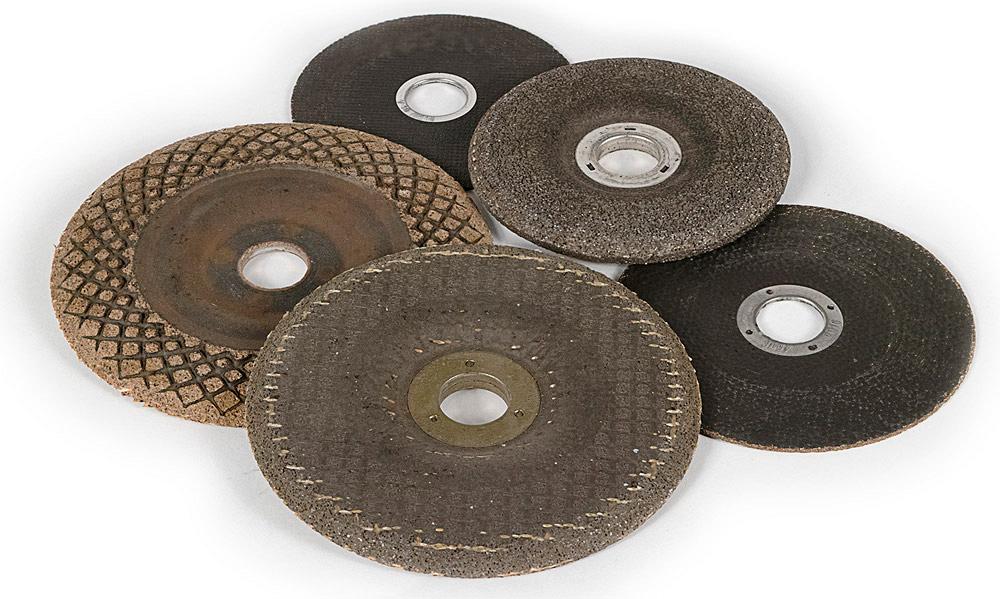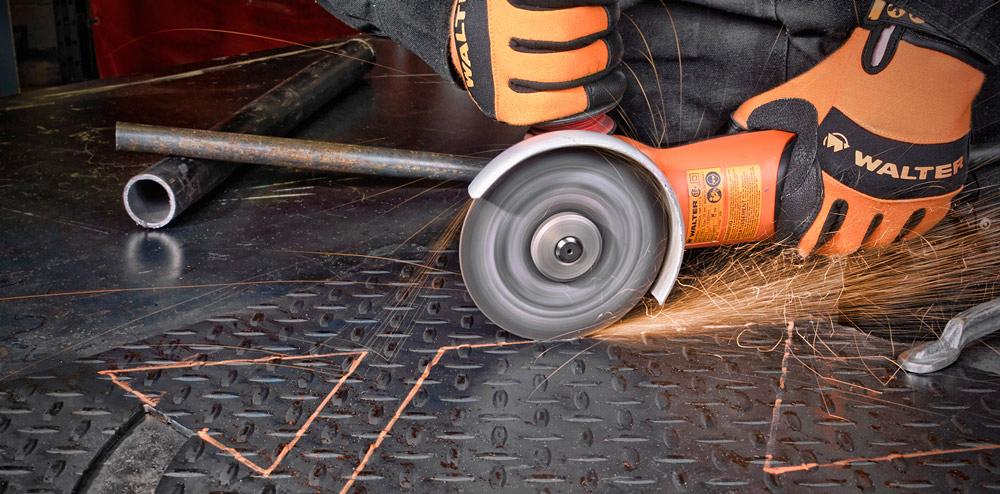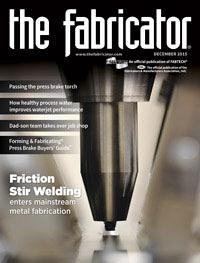Product Manager, Mechanical Solutions,
- FMA
- The Fabricator
- FABTECH
- Canadian Metalworking
Categories
- Additive Manufacturing
- Aluminum Welding
- Arc Welding
- Assembly and Joining
- Automation and Robotics
- Bending and Forming
- Consumables
- Cutting and Weld Prep
- Electric Vehicles
- En Español
- Finishing
- Hydroforming
- Laser Cutting
- Laser Welding
- Machining
- Manufacturing Software
- Materials Handling
- Metals/Materials
- Oxyfuel Cutting
- Plasma Cutting
- Power Tools
- Punching and Other Holemaking
- Roll Forming
- Safety
- Sawing
- Shearing
- Shop Management
- Testing and Measuring
- Tube and Pipe Fabrication
- Tube and Pipe Production
- Waterjet Cutting
Industry Directory
Webcasts
Podcasts
FAB 40
Advertise
Subscribe
Account Login
Search
3 steps to optimize a finishing operation
Some small investigatory steps can help to reduce operational costs and boost production efficiency
- By Tom Morris
- November 30, 2015
- Article
- Finishing

Figure 1
By letting the grinding disc and the power tool do the work, the tool operator can go about his job in a much more relaxed way.
Demonstrating and documenting cost savings has become essential for making a change on the shop floor. This is true for abrasives, which are highly commoditized products.
Metal fabricators usually focus on cost per unit when purchasing these types of products, rather than how many units are used or how those costs can tie up more time in labor-intensive operations.
Even when fabricators accept that time equals money, they may need hard numbers to be able to make the best decision. Firm estimates based on real data help fabricators see the bigger picture, including labor costs, instead of relying solely on the cost of the abrasives.
The approach also puts a focus on safety. Higher-cost abrasives are designed to remove material more aggressively than cheaper abrasives. They and the power tool do the majority of the work, helping to reduce operator fatigue over the course of a shift (see Figure 1).
The best way for a fabricator to document cost savings when comparing abrasive products is to conduct comparative tests both in a laboratory and on the shop floor using its own equipment. The process should be administered by experts trained to carefully differentiate between cutting, grinding, and rust removal applications to ensure that the test results are meaningful while remaining customized for the fabricator.
Some fabricators, however, may not be ready to engage in that sort of productivity investigation. Fortunately, they can still take small steps that lead to a thorough cost-savings effort.
Step 1: A Bucket Program
A fabricator looking to do an informal analysis of abrasive use and related costs might want to consider a bucket program.
Rather than simply taking the word of an abrasives sales representative about typical or average savings that might be achieved with a certain disc, the fabricator places a bucket on the shop floor and operators are asked to discard all their used abrasives in the bucket (see Figure 2). After a month, an expert performs a site analysis to visually analyze how operators are using their abrasive products, note the challenges, and evaluate ways of saving the fabricator money. Evaluators are able to make recommendations for potential process improvements and explain where the fabricator is literally throwing away money.
The analysis typically uncovers issues such as flap discs that show evidence of improper wear or 5-inch grinding wheels discarded when they are only worn to about 4 in., rather than the allowable 3 in. They may find glazed up, cut up, or broken wheels.
A bucket program offers a way to advise fabricators on equipment and abrasive changes that could lead to cost savings. Examples include revealing that the wheel being used is not right for the job at hand or switching to a different tool could improve the surface finish and reduce the amount of time spent on a particular operation.

Figure 2
These discs, which were retrieved from a throw-away bucket at a fab shop, were discarded before they were completely used up.
Step 2: A Safety Seminar
Safety is always a concern for metal fabricating shops. Safety training can also serve as the next step toward a more formal evaluation of abrasive usage in the shop.
Safety seminars complement mechanical finishing activities in a shop. All fabricators have to do is look at the visual evidence in the bucket from Step 1: They will find a great deal of broken product. When used improperly, cutoff wheels are quite prone to breakage (see Figure 3), which poses serious safety issues. These wheels are turning at about 180 miles per hour right in front of an operator’s face. Cutting wheels are usually among the most dangerous products used in the shop, and some shops even forbid their use altogether because they are perceived as too dangerous when misused.
A safety seminar can include operator training on the proper use of cutoff wheels to prevent injuries. It may even result in the recommendation to use a product that is safer for the given operation depending on the type and thickness of the material being cut. As such, a safety seminar can provide another way to increase productivity and possibly reduce expenses related to associated health and legal costs tied to injuries on the job and lost man-hours.
Step 3: A Productivity Program
After a fabricator has seen the visual evidence of just what is consumed during a month’s worth of mechanical finishing activity and explored the importance of maintaining worker safety, the shop is likely to be more open to a formal investigation of new abrasive products. This often leads to the request for a more formal productivity analysis from an abrasives product vendor.
In this type of program, abrasive products are tested against each other in an industrial environment. The goal is to determine just how much money
fabricators can save annually when using a particular style of abrasive product.
- What should such a program cover?
- An analysis of the material removal rate
- Report on the pressure/amperage draw put on the power tool during usage to ensure an
- Quantitative measurement of the performance of the grinding wheel, cutting wheel, or wire brush
- Time studies on how long certain tasks took to complete with different abrasive products
This type of data should then be used in conjunction with laboratory testing to prepare a preliminary report showing savings when all other operation costs are taken into consideration. For example, if a product is priced 10 percent higher but lasts twice as long, the fabricator should be able to quickly identify the cost savings resulting from a reduction in inventory used over the course of a calendar year.
The metal fabricator likely would want to see some of the productive program suggestions put into action on its own shop floor. That way the fabricator can conduct its own broader-scale tests so they can see the results for themselves and validate the earlier test data.
This is especially important with grinding wheels and abrasives because both the tool being used and the operator can change the results dramatically. The more powerful the grinder, the more pressure an operator may put on the wheels. Fabricators typically want to do their own tests to see how different grinders and different operators affect the testing process.
The optimal approach is to conduct in-shop testing for a month. For example, if the shop typically uses about 100 wheels in a month, it purchases 100 of the new abrasive product to be tested, and puts them into use throughout the shop, conducting operations as usual. If the shop has 20 wheels left over at the end of the month, it is proof that the new wheels are about 20 percent more efficient than the product formerly used.

Figure 3
When a tool operator applies too much pressure during a cutting operation, he is increasing the chance that the cutting disc might break, creating a potentially serious work hazard.
The laboratory analysis might prove interesting from a power tool perspective. For example, a large shop may use air grinders, so a laboratory analysis would be performed on an air grinder to give the shop a real-world comparison between abrasive products. If the shop uses an electric grinder (typical for smaller shops), two tests are conducted, one with the fabricator’s current grinder and one with a different type of grinder. Information on what the shop could save if it invested in a more powerful grinder is put in the productivity report.
The Results
At the end of this three-step process, a metal fabricator should have a good idea of what can be changed in its mechanical finishing operations to achieve increased productivity, more safety awareness, and reduced operational costs. The big change may be related to new abrasive consumables, but final recommendations also might entail process changes, such as reducing the number of steps needed to achieve the desired surface finish.
Every company that wants to have staying power and be competitive globally has to do whatever it can to take costs out of its operation while maintaining and even improving quality and productivity. Looking for savings is part of everyone’s DNA. Some metal fabricators might need a bit of a push to help get them started. However, a couple of easy steps will get them where they need to be.
About the Author
Tom Morris
810 Day Hill Road
Windsor, CT 06095
800-522-0321
Related Companies
subscribe now

The Fabricator is North America's leading magazine for the metal forming and fabricating industry. The magazine delivers the news, technical articles, and case histories that enable fabricators to do their jobs more efficiently. The Fabricator has served the industry since 1970.
start your free subscription- Stay connected from anywhere

Easily access valuable industry resources now with full access to the digital edition of The Fabricator.

Easily access valuable industry resources now with full access to the digital edition of The Welder.

Easily access valuable industry resources now with full access to the digital edition of The Tube and Pipe Journal.
- Podcasting
- Podcast:
- The Fabricator Podcast
- Published:
- 04/16/2024
- Running Time:
- 63:29
In this episode of The Fabricator Podcast, Caleb Chamberlain, co-founder and CEO of OSH Cut, discusses his company’s...
- Trending Articles
Steel industry reacts to Nucor’s new weekly published HRC price

How to set a press brake backgauge manually

Capturing, recording equipment inspection data for FMEA

Are two heads better than one in fiber laser cutting?

Hypertherm Associates implements Rapyuta Robotics AMRs in warehouse

- Industry Events
16th Annual Safety Conference
- April 30 - May 1, 2024
- Elgin,
Pipe and Tube Conference
- May 21 - 22, 2024
- Omaha, NE
World-Class Roll Forming Workshop
- June 5 - 6, 2024
- Louisville, KY
Advanced Laser Application Workshop
- June 25 - 27, 2024
- Novi, MI


























